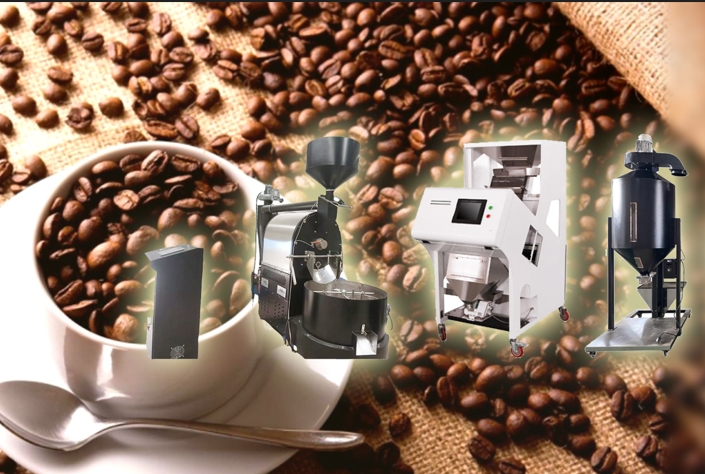The detachable components of a coffee grinder are closely related to the convenience of cleaning, directly affecting the hygiene of the equipment, the flavor of coffee and its service life. The following is an analysis from the aspects of detachable component design, cleaning process, maintenance key points and product cases:
First, the core design of detachable components
Cutter head and grinding core structure
Modular cutter head: The high-end models adopt magnetic attraction or quick-disassembly structures (such as Lagom P64), allowing users to disassemble it by hand without tools and avoiding the problem of easy slippage in traditional screw fixation.
Central axis fixation method:
Detachable middle shaft: Suitable for professional users, it is convenient to thoroughly clean the bearings and sealing rings, but attention should be paid to the installation accuracy (for example, a certain brand requires the coaxiality of the middle shaft to be ≤0.02mm).
Fixed central axis: Simplifies operation for beginners and reduces the risk of accidental installation, but it requires the use of a long-handled brush to clean the interior.
Powder silo and channel design
Transparent powder silo: Some models adopt detachable transparent silo bodies (such as Hario MSS-1B), which is convenient for observing the accumulation of residual powder and supports water washing cleaning.
Anti-static coating: The inner wall is coated with anti-static materials (such as nano-silica coating) to reduce the static electricity adsorption of coffee powder and lower the difficulty of cleaning.
Shell and Bracket
No dead corners shell: The all-metal body adopts an integrated molding design (such as Comandante C40), reducing dirt accumulation in the gaps and supporting the overall machine flushing.
Anti-slip disassembly assistance: Add an anti-slip krug or silicone sleeve at the handle to prevent slipping during disassembly (such as the hexagonal anti-slip pattern of 1Zpresso Q2).
Second, the key parameter of cleaning convenience
Tool dependency
Zero-tool cleaning: Some models (such as Timemore C3) can achieve deep cleaning with just a brush and air blowing, making them suitable for home users.
Professional tool requirements: Commercial models (such as Mahlkonig EK43) need to be equipped with hexagonal wrenches and torque wrenches to ensure the installation accuracy of the cutter head.
Control of residual powder content
Anti-residue design
Spiral powder guiding trough: Spiral patterns (such as Knock Aergrind) are added to the inner wall of the powder bin to reduce the amount of powder adhering.
Anti-flying powder structure: A silicone sealing ring (such as Ode Brew Grinder) is installed at the powder outlet to prevent coffee powder from spilling out during grinding.
Third, cleaning process and maintenance suggestions
Daily cleaning steps
Power-off safety: Unplug the power supply before operation (for electric grinding machines) or lock the cutter head (for hand-cranked grinding machines).
Step-by-step disassembly
Dismantle the powder silo and pour out the residual powder.
Disassemble the cutter head (if it can be disassembled) and clean the gap between the cutter teeth with a brush.
Clean the shell and bracket, wipe them with a damp cloth and dry them thoroughly.
Deep cleaning plan
Cycle: It is recommended to do it once a month or after the grinding volume reaches 500g.
Method:
Cutter head soaking: Grind with food-grade cleaning powder (such as Urnex Grindz) to break down oil stains and fine powder.
Channel flushing: Detachable parts should be rinsed with warm water. Do not soak the motor part.
Key points of long-term maintenance
Moisture-proof storage: Thoroughly dry after cleaning to prevent the cutter head from rusting (especially for high-carbon steel materials).
Regular calibration: Check the consistency of grinding degree every quarter and verify the particle distribution using standard sieves (such as 20 mesh, 60 mesh).
Fourth, purchasing suggestions
Household users: Give priority to electric or hand-cranked models that do not require tool disassembly (such as Baratza Sette 270Wi), taking into account both efficiency and the convenience of cleaning.
Commercial scenarios: It is recommended to adopt a quick-release design with a full movement (such as Niche Zero), combined with regular professional maintenance, to reduce downtime maintenance costs.
Special requirements:
Anti-static: Select models with inner wall coating (such as Comandante C40 MK4).
Portability: Lightweight detachable models (such as Timemore Slim Plus) are suitable for outdoor use.


